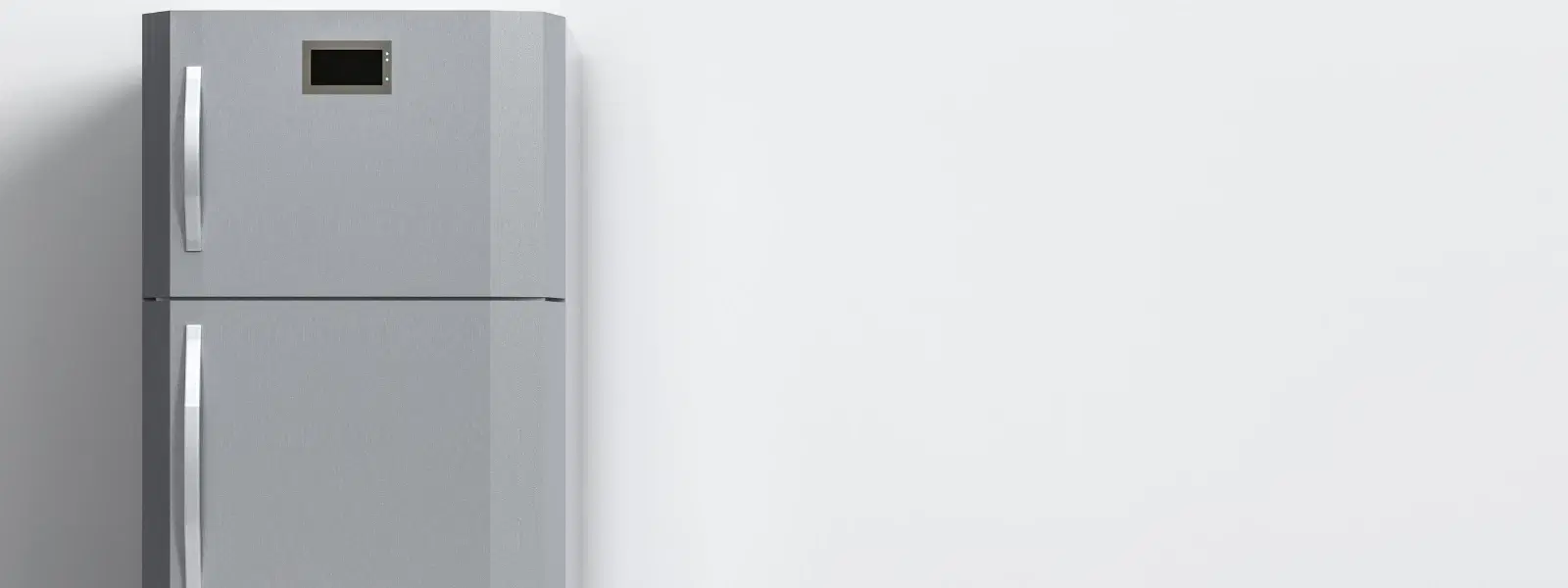
Home Appliances
•04 min read

Buy SAMSUNG 653 Litres 3 Star Auto Defrost Side by Side Convertible Refrigerator with Twin Cooling Plus (RS76CG8113SLHL, EZ Clean Steel) Online - Croma
Nothing is more frustrating than opening your fridge only to discover that it is not cooling properly. The sight of spoiled food or a fridge warm inside can be disheartening. This comprehensive checklist guides you through practical troubleshooting and maintenance tips to resolve common refrigerator cooling issues. Whether you suspect a malfunctioning fridge compressor or simply need fridge maintenance tips, you'll find everything you need to identify and fix the problem.
Begin by ensuring that your fridge is plugged in and receiving power. Confirm that the outlet is functioning correctly and that the circuit breaker is not tripped. A power issue is often the simplest cause of a refrigerator not working.
Verify that the thermostat is set to the recommended temperature. For most fridges, this is around 37°F, and for the freezer, about 0°F. Adjust the settings if needed and wait a few hours to determine if the temperature stabilises. Improper settings can be a major contributor to fridge temperature problems.
The door gaskets play a critical role in maintaining consistent cooling. Examine the seals for any cracks, tears or any debris that may hinder a proper seal. A quick tip is to perform the dollar bill test: slide a bill between the door and the frame; if it slips out easily, the seal may be compromised.
Dirty condenser coils can lead to inefficient cooling. Most often, the coils are located at the back or bottom of the appliance. Gently use a brush or a vacuum to remove any dust or debris. This simple maintenance task can enhance your fridge's performance significantly.
Cluttered interiors and overfilled shelves can obstruct air vents, leading to uneven cooling inside the refrigerator. Rearrange your groceries to ensure a clear path for air circulation. Proper airflow is essential to avoid having a fridge warm inside and to maintain overall efficiency.
Inspect the vents in both the main compartment and the freezer. Look for any blockages, such as ice or debris, and remove them carefully. Freeing up these vents is crucial to managing common refrigerator cooling issues and ensuring evenly distributed cool air.
Sometimes, your freezer may be operating correctly while the fridge remains warm. Check if the evaporator fan is functioning as it should. A failure in the damper control, which regulates the flow of cold air, can also lead to this issue. Troubleshooting fridge temperature problems often involves examining these internal components.
Listening for unusual noises from the compressor is a key step. A buzzing or rattling sound may indicate problems with the start relay or capacitor. Ensure that these parts are inspected carefully, as they are integral to your refrigerator's cooling system.
If your appliance appears to be entirely unresponsive, it is essential to double-check if the fridge is receiving power. Additionally, assess critical components like the defrost timer and the control board. A malfunction in these areas may require advanced troubleshooting or professional intervention.
Pro Tip from Croma: Regular maintenance, such as cleaning your condenser coils and checking door seals, is key to preventing many common fridge issues. Incorporating these simple tasks into your routine can mean fewer emergency repairs and a longer lifespan for your appliance.
Accessing the evaporator coils by removing the freezer panel may reveal whether frost buildup is causing your cooling issues. Excessive frost can signal a defrost system malfunction, which should be addressed promptly to avoid further damage.
Test the continuity of the defrost heater, thermostat, and timer to ensure each component is working correctly. Faulty parts in the defrost system can leave your fridge not cooling properly. Replacing any defective components following the manufacturer's instructions can resolve the defrost issues.
Advanced repairs, such as addressing persistent compressor issues or a malfunctioning control board, may require the expertise of a technician. If you have performed basic troubleshooting without success or if you are uncertain of the repair procedure, it is time to seek professional help. Look for service providers who offer not only repair but also post-service support and maintenance tips.
Check the evaporator fan and damper control as these components help distribute cool air from the freezer to the fridge.
It is advisable to clean the condenser coils every 6 to 12 months to maintain efficient cooling.
A buzzing noise can often be a sign of compressor issues or problems with the start relay. It may require inspection and potential replacement of these parts.
While some tasks are suitable for basic troubleshooting, repairing a fridge compressor typically requires professional assistance to ensure safety and effectiveness.
Routine maintenance, regular cleaning of condenser coils, and ensuring door seals are intact are effective practices. Following these steps can prevent common refrigerator cooling issues and help maintain steady performance.
Carefully following this checklist can save you both time and money while ensuring your appliance works efficiently. A proactive approach to troubleshooting a fridge that is not cooling properly includes basic inspections and more advanced diagnostic tasks. As you explore each step, remember that many issues have simple fixes when addressed promptly. Regular upkeep, such as cleaning the condenser coils and verifying proper thermostat and door conditions, will not only help resolve immediate issues but also extend the lifespan of your refrigerator.
For customers keen on smart solutions, it is worth noting that you can earn NeuCoins rewards each time you shop for the latest home appliances on Tata Neu. These rewards, combined with services like Express Delivery for orders placed before 6 PM, make for a seamless and valuable shopping experience. By maintaining your appliances regularly, you also maximise the efficiency of your investments, ensuring continued performance and reliability for years to come.